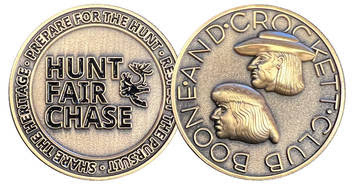Ethics: We Owe it to the Hunted
By Glen Wunderlich
Charter Member Professional Outdoor Media Association (POMA)
Having read with great interest a thought-provoking excerpt from an article in Fair Chase magazine titled, “I’ve Walked the Line…Have You?” by Robert D. Brown on the subject of hunting ethics, I thought it would be worth sharing some of the concepts – both his and mine. As a one-time head of the Wildlife and Fisheries Sciences Department at Texas A&M, he would lecture students and cited a list the potential advantages hunters could have over their prey.
Here are his listed aspects of giving hunters the advantage over the hunted:
- Baiting with salt or molasses
- Bows with laser sights
- Camouflage clothes
- Compound bows
- Corn feeders
- Food plots
- Doe urine
- Drones for scouting
- Grunts/Calls
- High-powered rifles
- Hunting inside high fences
- Hunting with dogs
- Listening devices
- Range finders
- Remote live TV
- Telescopic sights
- Trail cameras
- Tree stands/Blinds
To begin, we must understand that hunting rules vary from state to state and that a foundational principle of the issue is that whatever method we hunters employ must be legal to be ethical. However, mere legality does not necessarily equate to ethical.
As a professional member of the highly respected Boone and Crockett Club, Mr. Brown defines its fair-chase doctrine which must provide the game with a reasonable chance to escape. So then, are the use of muzzleloaders or bow and arrow, while stalking our game on the ground, the only way to achieve that?
I certainly hope not, because who among us would qualify as a sportsman or woman? I believe there are other important aspects of the issue and there’s one inescapable fact of reality often ignored: the human brain.
Years ago, there was a certain woodchuck that I wanted to eliminate from a farmer’s alfalfa field. Even though a high-powered rifle was legal to use, it made no sense. Because of the relatively close proximity to a nearby residence, I did not want to alarm anyone in the early morning hours. To complicate matters, the ‘chuck’s domain was positioned so that shooting from distance would mean shooting toward a highway.
I devised a plan whereby I would use my bicycle to get to the area, which had no place to park a motor vehicle without causing some type of interference with traffic; I would hide the two-wheeler in the roadside ditch and hunt close by toward the safe center of the field.
At dawn, I pedaled a few miles with my single-shot Thompson/Center Contender pistol chambered in .22 rimfire in a backpack. The chosen ammunition was subsonic to avoid unnecessary noise and my practice sessions were done at the known yardage of the forthcoming sneak attack. There I waited in camouflage clothing head to toe in the prone position, while the hay hog slumbered. At last, one perfectly placed shot completed the mission’s purpose.
Was it fair? That’s debatable depending on perspective, but in my book it was as ethical as possible. Never having been one to sneak around in the woods with moccasins afoot, it fit my style of ensuring a quick and humane end to the dilemma.
I remained within my limitations to execute the perfect plan both legally and ethically. Although there was little doubt that the woodchuck would escape its pending demise, I met the challenge of fair chase according to my own definition.
If we take only shots that we know we can make with at least a 9-out-of-10 chance, then we are head and shoulders above those that don’t. We owe it to the hunted.






